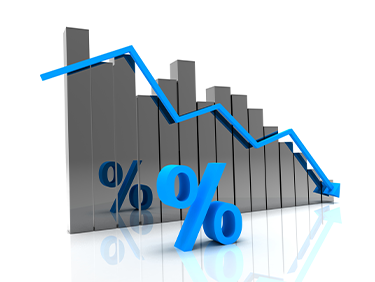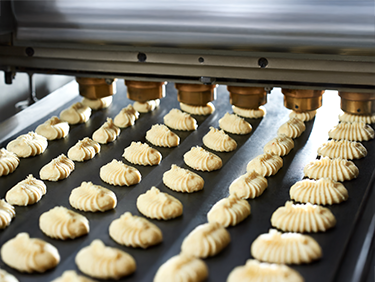
-
In a recent report, HC Brokerage presented their analysis of Egypt’s cheese sector and a valuation of the two players Obourland and Domty, where HC maintained Overweight rating for both on share price dip.
- Demand recovery was mainly interrupted by higher prices to mitigate higher input costs
- However, margins should improve in 2H21e on low-interest costs and improved working capital, allowing for good FCF generation
- We reduce our 12M TP for Obourland c7% to EGP9.26/share, and for Domty c20% to EGP6.73/share while maintaining our OW rating for both on share price dip. Obourland is our sector pick
Noha Baraka, the Head of Consumers at HC commented on Egypt cheese sector: “We see Obourland offering the best exposure to the Egyptian cheese sector: In the aftermath of soaring global commodity prices and the prolonging of the COVID-19 situation, we see inflation rising, pressuring consumer’s disposable income, and weighing down on private consumption. We see private consumption growth dropping to an average of 6.15% in 2H20/21e from an average of 9.91% in 1H20/21. The elevated global commodity prices have left companies with no choice but to raise their retail prices to restore margins, which could impede the volume growth of certain players, in our view. Companies fared differently within the cheese market depending on their pricing strategies, and the varying degrees of their exposure to the crisis. Given that Domty started the year with a more aggressive pricing strategy than Obourland, and the situation worsened with the phasing out of agents, we accordingly expect its cheese volumes to drop c8% y-o-y in 2021e. As for Obourland, we forecast volumes to remain essentially unchanged y-o-y in 2021e, supported by its active procurement strategy allowing it to adopt gradual price increases and maintaining its presence in underserved areas characterized by lower competition.”
“Despite an unfavorable cost outlook, we still see the possibility of margin expansion for both companies toward 2H21e: The COVID-19 outbreak disrupted the global commodities markets in 2021. The average winning contract price of skimmed milk powder from New Zealand rose c15% y-t-d and c25% y-o-y, with future contracts suggesting that prices will continue rising for the rest of the year, implying an increase of c3% h-o-h in 2H21e and c25% y-o-y higher. Also, palm oil prices increased c57% y-t-d due to labor shortages in major producing countries following the COVID-19 outbreak, with future contracts suggest that palm oil prices are expected to drop c7% h-o-h in 2H21e but still increase c44% y-o-y. Starting with Obourland, we see that its real strength lies in running a solid business model, safeguarding it during the recent hike in commodity prices. Obourland adopts successful cost management initiatives, an active procurement strategy, raised efficiencies, and is dependent mainly on wholesalers, all together are paying off and allowing the company to maintain high margins for the rest of the year, in our view. As for Domty, we expect the relative easing of the commodity wave cycle, the completion of the phasing out of agents, improved cost management, and increased contribution from the higher-margin bakery segment to bode well for its margins in 2H21e. Nevertheless, we see that cost overruns stemming from high marketing expenses for both companies related to new launches and improved distribution channels accelerate SG&A spending and lead to some return dilution. The cost overrun should leave our Obourland terminal EBITDA margin at 15.9%, 1.3 pp lower than in 2020, and Domty at 9.0%, 1.4 pp lower than 2020. However, we are not concerned, as both companies should enjoy a healthy cash conversion cycle (CCC) due to their increased reliance on wholesalers’ distribution channels, which should translate to good FCF generation, not fully priced in by the market. As a result, Obourland offers an average FCF yield of c14% and Domty c12% over our forecast period.” Baraka added.
“Maintain Overweight for both; we favor Obourland: We differentiate between stocks based on their demand recovery, pricing strategy, balance sheet strength, and the healthiness of their cash flow cycle. For dairy names, we have lowered our valuations on lower-than-expected demand recovery in the cheese segment and rising costs with unmatched price increases, despite a lower cost of capital. As a result, we reduce our 12-month target price for Obourland c7% to EGP9.26/share and maintain an Overweight rating. Obourland offers a compelling valuation, despite its outperforming the market by c21% since the beginning of the year. For Domty, we reduce our 12-month target price c20% to EGP6.73/share and maintain our Overweight rating, with the stock underperforming the market by c12% over the same period. Historically, Obourland has proved its resilience given its defensive nature, fairly weathering stock market shocks, and outperforming during stock market recovery times. With both companies having solid fundamentals and compelling valuations, we favour Obourland, especially when the stock market lacks triggers.” Baraka Concluded.
- trading.


